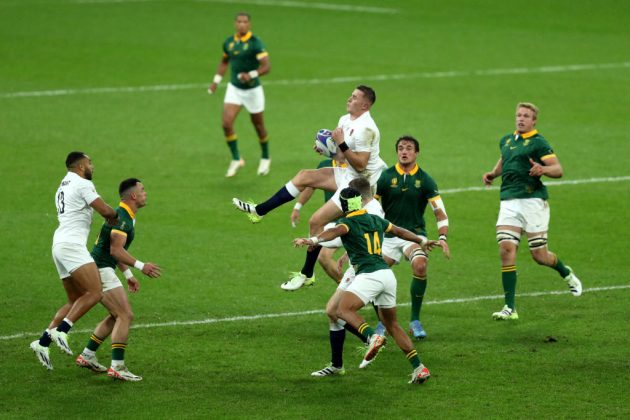Also known as an 'up-and-under' or 'bomb', we dissect the high kick
A Garryowen is a rugby term but where does it come from? Those of a certain vintage will remember Bill McLaren’s commentaries, which had many, many highlights when he was the ‘Voice of Rugby’.
One of his favourite phrases involved former Ireland fly-half Tony Ward, who won 19 caps for his country between 1978 and 1987 before turning to journalism. Whenever Ward launched a high up-and-under McLaren would say something like ‘there’s the Garryowen from the man from Garryowen’.
Related: What is a HIA?
Ward, played for Garryowen in Limerick, who currently play in AIB League Division One, and the kick – otherwise known as an ‘up-and-under’ or a ‘bomb’ – is named after that club.
A Garryowen kick is used to launch the ball high in the air, giving the chasers of the attacking side time to get to the catcher and tackle them, hopefully, at the same time as they try to collect the ball. It can cause carnage with huge forwards and speedy wings and centres homing in on the unfortunate person underneath the ball or giving them time to knock it back.
The tactic was popularised by, you’ve guessed it, Garryowen RFC in the 1920s when they won the Munster Senior Cup in 1924, 1925 and 1926. So, the Garryowen was born at the Market’s Field although the club have played at Dooradoyle since 1958.
Jonny Wilkinson and, currently, Sale Sharks fly-half George Ford are masters of the Garryowen. Ford has also tweaked it by reviving the spiral bomb, a kick that was used a lot in the 1970s, where the ball comes down unpredictably and often dips away from the catcher.
George Ford's spiral bomb is something else… 😵😂 #GallagherPrem pic.twitter.com/CQwGc5s8KX
— Rugby on TNT Sports (@rugbyontnt) March 28, 2021
It can be a nightmare for defenders, just ask Anthony Watson, one of the best high ball receivers in the world, who was tormented by Ford at Welford Road in 2021 by a series of wicked spiral bombs raining down on him.
Download the digital edition of Rugby World straight to your tablet or subscribe to the print edition to get the magazine delivered to your door.





